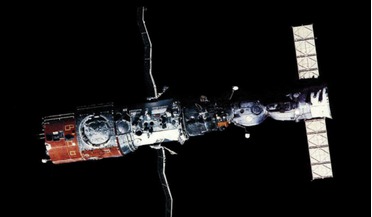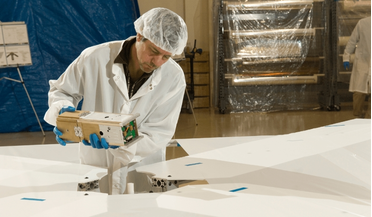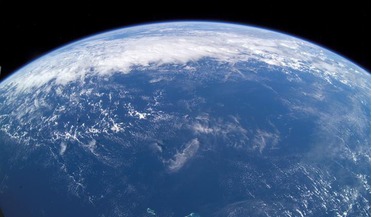 August 2016
Fireflies and saucers
August 2016
Fireflies and saucers
... out laughing. Later on, it turned out that the particles were actually small pieces of ice, the product of hydrogen peroxide decomposition in the attitude engines. Russian veteran cosmonaut Georgy Grechko is an acknowledged ‘UFO expert’. The thing...
 January 2017
New oceans beckon for solar sail technology
January 2017
New oceans beckon for solar sail technology
... sails use the solar wind for propulsion. This is incorrect. The solar wind is composed of atoms, typically hydrogen and helium, and their interaction with the solar sail produces no significant thrust. Photons have no rest...
 May 2017
World needs strong space governance system
May 2017
World needs strong space governance system
... set at just two minutes from ‘Doomsday’, as the Soviet Union and the United States tested new hydrogen weapons. In July 2014, commenting on the state of the world, the former US Secretary of State Madame Madeleine Albright...
 July 2019
Who owns outer space?
July 2019
Who owns outer space?
..., titanium and aluminium. Its surface seemingly has an abundance of water-ice that can be broken down into hydrogen and oxygen and subsequently used for rocket propulsion and life support. It also contains helium-3, an isotope...
 09 June 2017
Key ingredients to life found around Sun-like stars
09 June 2017
Key ingredients to life found around Sun-like stars
...-type protostars. This chemical building block of life is methyl isocyanate, a complex organic molecule containing carbon, hydrogen, nitrogen and oxygen atoms in the chemical configuration CH3NCO. Intriguingly, this is not the first complex molecule...
 09 November 2018
Leftover gas from the Sun's birth created Earth's water
09 November 2018
Leftover gas from the Sun's birth created Earth's water
...asteroids, how did it get here? By looking at samples of hydrogen from deep inside the Earth, scientists have seen that there is notably...those from the solar nebula. "We calculated how much hydrogen dissolved in these bodies' mantles could have ended ...